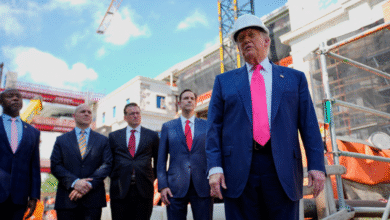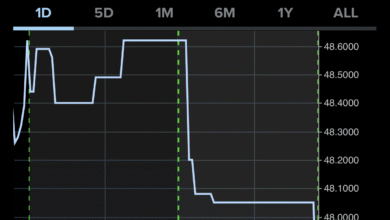Blockchain Regulatory Certainty Act Shields Crypto Builders
The Blockchain Regulatory Certainty Act (BRCA) marks a pivotal moment in the ongoing evolution of crypto regulation in the United States. With a renewed focus on protecting non-custodial developers, this legislation aims to bolster digital asset innovation by providing a clear and supportive legal framework. Spearheaded by U.S. lawmakers Representative Tom Emmer and Representative Ritchie Torres, the BRCA seeks to prevent misclassification of developers as money transmitters, shielding them from unnecessary regulatory burdens. Ultimately, this Act is crucial for ensuring that U.S. crypto developers receive the protection they need to thrive and compete in a global landscape. By fostering a favorable environment for blockchain initiatives, the BRCA promises to safeguard American technological leadership while encouraging responsible growth in the digital asset sphere.
The reintroduction of the Blockchain Regulatory Certainty Act signifies a groundbreaking shift in the landscape of digital currency legislation in America. This important measure aims to shield non-custodial software creators from excessive governmental scrutiny, thereby nurturing a climate conducive to cutting-edge advancements in financial technology. Lawmakers are keenly aware that clear guidelines in the realm of cryptocurrency are essential for fostering a robust ecosystem that supports diverse innovation within the fintech space. By preventing the wrongful classification of developers under outdated money services regulations, the Act endeavors to protect those crucial players who contribute significantly to the burgeoning world of blockchain technology. With a strong emphasis on safeguarding the interests of crypto developers and promoting sustainable practices, this initiative represents a forward-thinking solution for the future of digital assets.
Understanding the Blockchain Regulatory Certainty Act (BRCA)
The Blockchain Regulatory Certainty Act (BRCA) is a pivotal piece of legislation aimed at providing clarity and security for non-custodial crypto developers. By delineating the responsibilities and categorizations within the digital asset industry, the BRCA sends a clear message: if developers do not hold consumer funds, they should not be burdened with the same regulations as money transmitters. This distinction is crucial for fostering an environment where digital asset innovation can thrive without the fear of excessive government oversight.
With the rapid evolution of technology, U.S. lawmakers recognize the importance of maintaining the country’s competitive edge in the global blockchain ecosystem. The BRCA, by protecting non-custodial developers, promotes the growth of services enabling decentralized finance (DeFi) and other blockchain applications. Supporters see this as a necessary step to ensure the United States remains a leader in digital asset technology, especially as competition intensifies internationally.
The Impact of BRCA on Non-Custodial Developers
By implementing the Blockchain Regulatory Certainty Act, non-custodial developers are expected to experience a significant reduction in regulatory burdens. The legislation aims to provide clear guidelines that distinguish their roles from those of traditional financial institutions, thus preventing them from being wrongfully categorized as money transmitters. This protection not only shields developers from excessive scrutiny but also incentivizes innovation as they can operate within a clearer legal framework.
Moreover, the BRCA addresses the concerns of crypto developers regarding the current regulatory environment, which often stifles creativity due to fear of prosecution. With this act, U.S. lawmakers aim to cultivate a landscape where developers can experiment with new technologies, thereby encouraging the emergence of fresh ideas and services that benefit the broader digital economy.
Benefits for the Digital Asset Innovation Landscape in the U.S.
The introduction of the Blockchain Regulatory Certainty Act is expected to positively impact the overall landscape of digital asset innovation in the United States. By providing comprehensive legal protections for crypto developers, the BRCA clears the path for new projects and technologies to emerge without the threat of regulatory backlash. This can lead to an influx of investments in blockchain initiatives, fostering a vibrant innovation ecosystem.
Furthermore, as the act strengthens the backstop of protection for non-custodial developers, it can contribute to greater public trust in blockchain technologies. Consumers and investors can feel more secure in engaging with projects that comply with applicable laws while adhering to a framework that recognizes the unique aspects of decentralized finance. As confidence builds in the regulatory environment, participation in the crypto market is likely to grow, benefiting developers and users alike.
The Role of US Lawmakers in Shaping Crypto Regulation
U.S. lawmakers play an instrumental role in shaping the regulatory framework for cryptocurrency and blockchain technologies. Their decisions can foster or hinder the pace of innovation within the industry. By introducing the Blockchain Regulatory Certainty Act, representatives like Tom Emmer and Ritchie Torres are demonstrating a commitment to protection and clarity for developers operating within the complex landscape of crypto regulation. This proactive approach is vital as it lays down guidelines that aim to adapt to and embrace technological advancements.
Moreover, the bipartisan nature of the BRCA highlights an emerging consensus among lawmakers regarding the need for a balanced regulatory approach. As the cryptocurrency space becomes increasingly entrenched in global commerce, U.S. lawmakers are recognizing that fostering a pro-innovation environment is essential. Their actions are pivotal in ensuring that the U.S. not only retains its status as a leader in financial technology but also attracts international talent and investment.
Protecting Crypto Developers: A Priority for Innovation
The potential of the Blockchain Regulatory Certainty Act to protect crypto developers cannot be overstated. By preventing unjust classifications and regulatory overreach, the act enables developers to focus on innovation rather than compliance issues that have historically hampered growth. This clarity allows developers to build and implement solutions that challenge traditional finance, create new services, and harness the unique capabilities of blockchain technology.
Additionally, the act supports the notion that not all crypto activities should be treated uniformly under existing financial regulations. By tailoring protections specifically for non-custodial developers, lawmakers acknowledge the distinct nature of decentralized technologies. This, in turn, encourages creativity and the development of diverse applications that could revolutionize various sectors beyond finance.
Collaboration Between Lawmakers and Industry Leaders
The passage of the Blockchain Regulatory Certainty Act reflects a collaborative effort between lawmakers and industry leaders. Lawmakers like Rep. Emmer and Rep. Torres have actively sought input from stakeholders in the crypto sector to ensure that the legislation aligns with real-world experiences and challenges facing non-custodial developers. This collaborative approach is essential for crafting effective regulations that promote growth without stifling innovation.
Industry backing, as demonstrated by organizations such as Coin Center and the DeFi Education Fund, also illustrates the importance of aligning policy with industry needs. As stakeholders express their concerns and insights, lawmakers can refine initiatives like the BRCA to better safeguard the interests of crypto developers, ultimately creating a more dynamic and competitive environment for digital asset innovations.
Navigating Regulatory Challenges with BRCA
The Blockchain Regulatory Certainty Act is a strategic move designed to help non-custodial developers navigate the often murky waters of crypto regulation. By establishing clear distinctions between custodial and non-custodial roles, the BRCA provides developers with a much-needed roadmap that can help them avoid regulatory pitfalls. This enables them to innovate freely and efficiently, contributing to broader advancements in the digital asset space.
While the act provides significant protections, it does not eliminate the need for compliance altogether. Developers must still operate within a framework that ensures responsible behavior and accountability. The BRCA emphasizes responsible oversight while allowing for the freedom to explore novel ideas, creating a balanced approach to regulation that can inspire confidence in new crypto projects.
Future Implications of the Blockchain Regulatory Certainty Act
The implications of the Blockchain Regulatory Certainty Act extend far beyond immediate protections for non-custodial developers. By clarifying regulatory expectations, the BRCA paves the way for sustained growth and innovation in the digital asset sector. As more developers enter the market with the confidence that they will not face excessive regulatory scrutiny, the potential for technological advancements in blockchain is boundless.
Furthermore, the act sets a precedent for how regulators can approach digital asset innovation in the future. By recognizing the unique aspects of non-custodial operations, the BRCA encourages legislators to think critically about how to support innovation while maintaining safety and security in financial markets. This could lead to more comprehensive reforms in the future that further promote development within the crypto ecosystem.
Support from the Crypto Community for BRCA
The Blockchain Regulatory Certainty Act has garnered substantial support from various elements within the crypto community, illustrating a shared understanding of the challenges faced by non-custodial developers. Many industry leaders see the legislation as a viable solution to protect innovators from being unnecessarily classified under stringent financial regulations. This support not only underscores the importance of BRCA but also highlights a collective desire for a regulatory environment that nurtures growth.
As organizations rally behind the BRCA, their voices reinforce the urgency of legislative action. Stakeholders argue that protecting developers is critical to preventing a brain drain, where talent and projects could be siphoned off to more favorable international jurisdictions. By advocating for the BRCA, the crypto community signals its commitment to fostering a competitive and innovative landscape within America’s digital economy.
Addressing Criticism: The Revised Blockchain Regulatory Certainty Act
Following its earlier rejection during a Congressional markup, the revised version of the Blockchain Regulatory Certainty Act has made significant adjustments to address prior criticisms. Lawmakers have worked to ensure that the bill balances innovation and oversight effectively, demonstrating a willingness to listen to feedback from various stakeholders. This evolution of the BRCA signifies a proactive approach to shaping a supportive regulatory landscape for non-custodial developers.
By responding to concerns about compliance and regulatory ambiguity, the updated BRCA represents a refined strategy aimed at boosting innovation while ensuring accountability in the crypto space. This shift reflects the understanding that while fostering growth is important, maintaining a framework that promotes responsibility is equally essential.
Frequently Asked Questions
What is the Blockchain Regulatory Certainty Act and its purpose for non-custodial developers?
The Blockchain Regulatory Certainty Act (BRCA) is a bipartisan bill introduced by U.S. lawmakers aimed at protecting non-custodial crypto developers from regulatory overreach. Its primary goal is to prevent these developers from being classified as money transmitters, which would subject them to unnecessary financial regulations. By ensuring a clear legal framework, the BRCA encourages innovation in the digital asset sector, safeguarding the interests of developers who do not handle consumer funds.
How does the Blockchain Regulatory Certainty Act protect crypto developers?
The Blockchain Regulatory Certainty Act provides crucial protections for crypto developers by clarifying that individuals and entities that do not custody consumer funds are not considered money transmitters under current financial laws. This distinction helps shield non-custodial developers from excessive regulatory prosecution, allowing them to focus on fostering digital asset innovation without the fear of being misclassified.
Why is the Blockchain Regulatory Certainty Act important for the future of blockchain technology in the U.S.?
The Blockchain Regulatory Certainty Act is vital for the future of blockchain technology in the U.S. as it establishes a legal framework that supports responsible innovation while addressing regulatory concerns. By protecting non-custodial developers from unwarranted classifications, the bill promotes the growth of the digital asset sector within the country, reducing the risk of innovation being pushed overseas, which could harm American investors and technological leadership.
What impact does the Blockchain Regulatory Certainty Act have on digital asset innovation?
The Blockchain Regulatory Certainty Act significantly impacts digital asset innovation by providing a clear regulatory framework that encourages creativity and experimentation among non-custodial developers. By protecting these innovators from being misclassified as money transmitters, the BRCA fosters a more conducive environment for developing blockchain solutions and increases the potential for technological advancements in the financial sector.
What are the key elements of the Blockchain Regulatory Certainty Act reintroduced by U.S. lawmakers?
The reintroduced Blockchain Regulatory Certainty Act includes key elements such as clarifying that non-custodial developers are not considered money transmitters, establishing fit-for-purpose rules for the digital asset sector, and addressing previous criticisms related to oversight. This refined framework aims to balance legal protection for crypto developers while ensuring necessary regulatory measures are in place to uphold financial integrity.
How does the Blockchain Regulatory Certainty Act affect the classification of non-custodial developers?
The Blockchain Regulatory Certainty Act directly affects the classification of non-custodial developers by preventing them from being incorrectly categorized as operators of an ‘unlicensed money services business.’ This clarification protects developers who do not custody consumer funds from excessive regulatory scrutiny and legal challenges, enabling them to operate more freely in the digital asset space.
What is the significance of U.S. lawmakers’ support for the Blockchain Regulatory Certainty Act?
U.S. lawmakers’ support for the Blockchain Regulatory Certainty Act signifies a bipartisan recognition of the importance of fostering a supportive environment for crypto developers. This initiative reflects a commitment to protecting innovation within the blockchain industry while ensuring that appropriate regulatory measures are maintained, thereby facilitating the growth of the digital asset sector in the United States.
What can stakeholders in the blockchain industry do to support the Blockchain Regulatory Certainty Act?
Stakeholders in the blockchain industry can support the Blockchain Regulatory Certainty Act by advocating for its passage through engagement with lawmakers, participating in industry discussions, and raising awareness about the importance of protecting non-custodial developers. They can also collaborate with organizations that lobby for the bill’s importance in maintaining U.S. technological leadership and encouraging innovation in the crypto space.
| Key Point | Details |
|---|---|
| Introduction of the Bill | Reintroduction of the Blockchain Regulatory Certainty Act (BRCA) on May 21 by U.S. Rep. Tom Emmer, aimed at protecting non-custodial crypto developers. |
| Bipartisan Support | Co-led by Rep. Ritchie Torres, reflecting a joint effort across party lines. |
| Purpose of the Legislation | To prevent non-custodial developers from being misclassified as money transmitters under current regulations. |
| Encouragement of Innovation | Legislation aims to provide a legal framework that fosters innovation in the digital asset space while ensuring oversight. |
| Industry Support | Strong backing from industry leaders and organizations, noting its importance in protecting American crypto developers. |
| Addressing Previous Concerns | The reintroduction improves upon earlier drafts, aiming to resolve past criticisms and regulatory issues. |
| Potential Impact | Preventing a brain drain of talent and promoting open-source innovation domestically. |
Summary
The Blockchain Regulatory Certainty Act is poised to transform the landscape for non-custodial crypto developers by providing essential protections against regulatory overreach. This bipartisan initiative seeks to clarify the classification of non-custodial developers and ensure they are not unintentionally categorised as money transmitters. By fostering a robust legal framework, the act promotes innovation and secures the future of blockchain technology in the U.S., stimulating economic growth while establishing fair regulatory practices.




